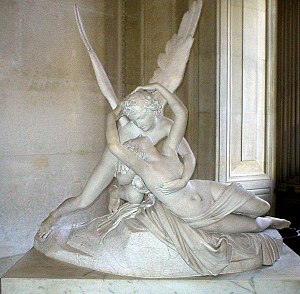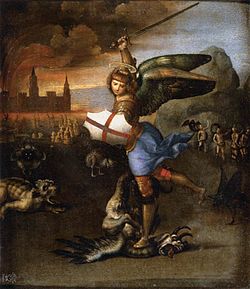Spirituality and Myth/ART 103/Myth
From WikiEducator
Jump to: navigation, search
Myth in Art
Myth is defined as a usually traditional story of ostensibly historical events that serves to unfold part of the worldview of a people or explain a practice, belief, or natural phenomenon. They offer us explanations about the mysteries beyond the physical plane of our existence and that resonate within our own reality. Diverse examples of myth include the Christian story of David and Goliath, the fairy tale "Beauty and the Beast," and the genesis of the Asaro Mud Men in New Guinea.
In another example, Antonio Canova's statue Psyche Revived by Cupid's Kiss (at right), commissioned in 1787, exemplifies the Neoclassic devotion to love and emotion. It represents the god Cupid in the height of love and tenderness, immediately after awakening the lifeless Psyche with a kiss. A masterpiece of its period, it appeals to the senses of sight and touch, but still alludes to the Romantic interest in emotion co-existing with Neoclassicism.
The myth associated with Saint Michael and the Dragon (at right) is symbolized with the personification of goodness and evil represented by a winged serpent or reptile. St. Michael clearly has the upper hand here as he triumphs over Satan.
Do some research on a creation myth. In your journal, record a few reflections on the myth.

